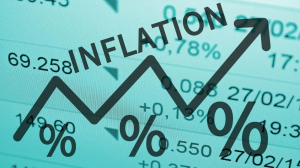
In the third quarter of 2022, interest rates are on the rise in both New Zealand and Australia, as the Reserve Banks in both countries try to bring rising inflation rates under control. Let’s compare home loan rates in both countries.
What are New Zealand home loan rates?
The Reserve Bank in New Zealand has increased the interest rate four times in 2022, also raising the rate by a total of 1.75%. New Zealand’s inflation rate is higher than Australia’s at 7.3% over the past 12 months.
This is a 32-year high and has many analysts forecasting further rate rises in the short term.
Most New Zealand home loan lenders have raised their interest rates in line with the Reserve Bank’s increases. However, interest rates in New Zealand prior to the increases weren’t quite as low as the record lows Australia was experiencing. Rates of between 5 and 6% are now the most common in New Zealand, which is about 2% higher than home loan rates in Australia.
New Zealand also experienced a recent property boom, but it has been followed by a downturn as interest rates have risen. This could be a sign of what the Australian market is about to experience.
What are Australian home loan rates?
Like the Reserve Bank in New Zealand, the Reserve Bank in Australia has increased the official interest rate in four consecutive months in 2022, raising the rate by 1.75%. Many analysts are predicting further rate rises before the end of the year with the Australian inflation rate having surged to 6.1% over the last 12 months.
Most home loan lenders have raised their interest rates in line with the Reserve Bank increases. Rates of between 3 and 4% are now the most common.
Home loan interest rates in Australia were at record lows prior to the recent increases, and are still at historically low levels despite the recent increases. However, the price of property has also boomed in most real estate markets in Australia over the past two years, with many properties increasing in value by more than 20%.
Coupled with the recent interest rate rise, the price rise has made home loan repayments less affordable for people who haven’t entered the property market. It has also increased the monthly repayments of people with mortgages. These factors may see Australian property prices fall in the short term.
Is a fixed rate the best for your New Zealand home loan interest rate?
This depends on the rate you can get and your personal financial circumstances. Many lenders have already factored in the potential for future rate rises in their fixed rate home loan offerings. If you fix at a higher rate (for example 7%) and the floating rate increases by more (let’s say 7.5%), then you would be better off. However if floating rates don’t rise by as much, you won’t.
Fixing your rate though can give you peace of mind. If you fix at a rate where you can afford the repayments, then you won’t have to worry about any interest rate rises for the duration of your fixed rate term. Most lenders in New Zealand offer fixed rate terms of 6 months to 5 years.
Should you refinance your New Zealand home loan to a better rate?
Again, this depends on your personal financial situation. If you can refinance to a lower interest rate than the one you currently have, then you may be better off if the benefits of refinancing outweigh the costs. Any mortgage adviser or bank should provide you with a simple comparison of savings from your rate change versus costs to refinance.






